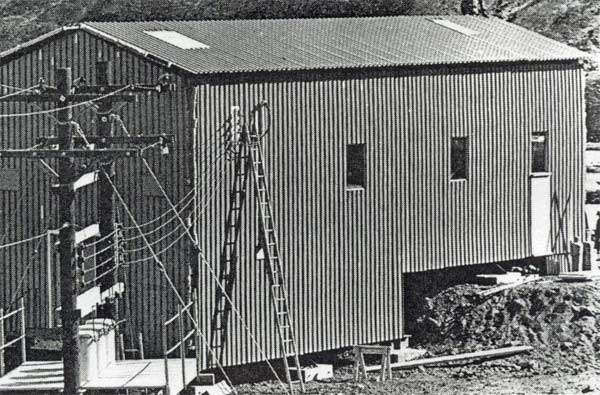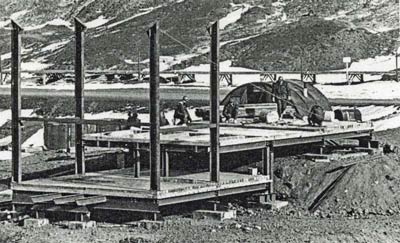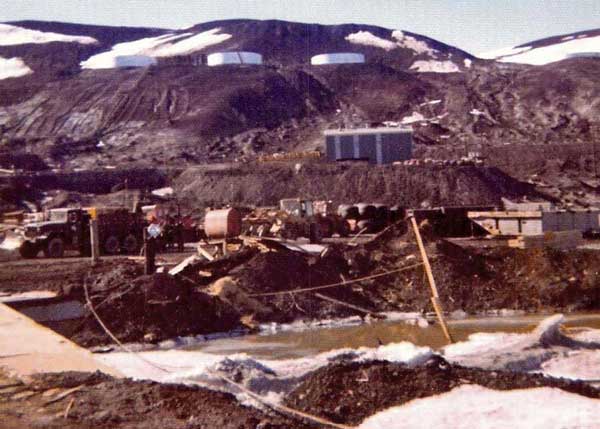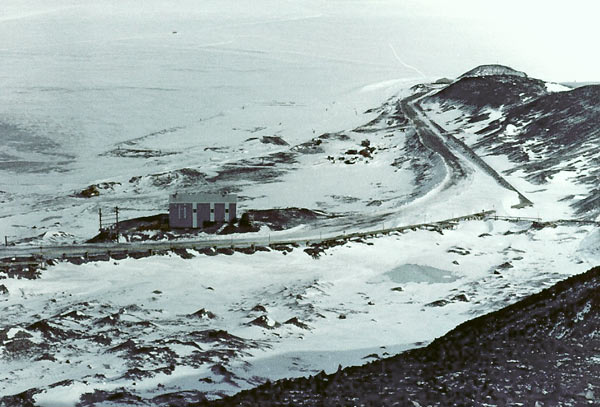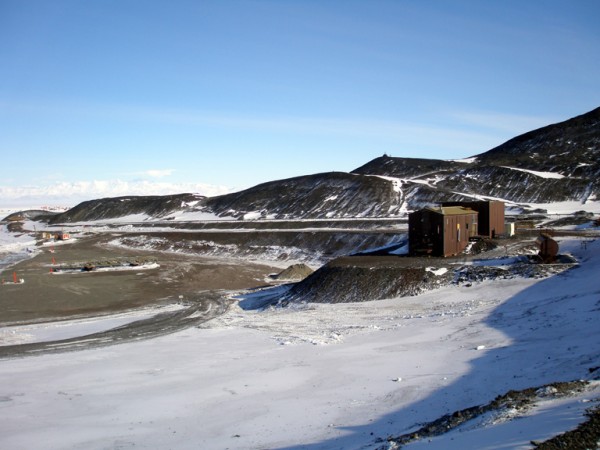|
This building is located along the road to the ice pier and Hut Point. It, as well as the oil-fired waste incinerators inside, were completed by NMCB-71 during the 1971-72 season as an attempt to, well, get rid of trash and garbage in means other than open burning or dumping on the sea ice in front of the station. There were no studies done, and this was before the days of environmental impact statements...it turns out that the Navy was putting up a similar installation at the Naval Research Laboratory at Point Barrow, so they bought another set of equipment for McMurdo (!). The set of equipment included two 500 pound-per-hour incinerator units, so that one could be cleaned while the other was in operation. Each was equipped with an auxiliary oil burner for dealing with wet trash. The units were installed at the southeast end of the building (the end closest to Building 155, with the lowered floor). At above right, a photo of the structure being erected. This photo, as well as the one at the top of this page, are U.S. Navy photos from the DF-72 NMCB-71 cruisebook. 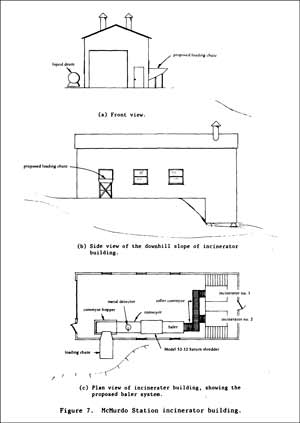
The diagram at left is from NCEL Technical Memorandum M-64-79-10, prepared for NSFA by Dr. Carter J. Ward in July 1979...it is included in an appendix to Chapter 9 of the 1979 revision of the "Engineering Manual for McMurdo Station" (link to PDF). Above, a view of the building as seen from near the shoreline, looking across the retrograde cargo yard. The facade design is typical of the many Robertson buildings which were erected in Antarctica in the late 60's--it resembles the original facades of the Hotel California at McMurdo and the GWR building at Palmer Station. This photo is from 1975 McM winterover Jim Mathews, probably taken in December 1974. Here's a later view of the other side of the building, this photo is from Joe Warne who wintered in 1980. Jump ahead just a few more years...in the early 1990s NSF was being hammered to reduce the open burning and other waste stockpiling at the "Fortress Rocks Landfill" so they with ASA devised a couple of incinerator projects. So...during the 1990-91 summer a new incinerator was installed in this building (and used extensively during the 1991 winter), while the other options were considered. The permanent incinerator was to be in an existing warehouse building (340) up the hill from Building 155...in the meantime another "interim" incinerator would be installed somewhere, and it ended up in Building 185 (the waste barn) despite this 1991 NSF environmental action memorandum. This unit was operated during the 1992 winter. Burning was eventually discontinued because of an environmental lawsuit...and ultimately because of the Madrid protocol. It turned out that shipping the stuff out was cheaper than building and operating an incinerator anyway. All incineration was discontinued on 22 March 1993. The report: Lugar, Robert M. "Results of SO2, NOx, and CO Monitoring at McMurdo Station, Antarctica," EG&G Idaho Inc., May 1993 describes some of the air monitoring done during the 1992-93 season. The incinerator building, otherwise known as Building 183, has been expanded and modified a bit since 1972. At one time it was being used for preparing airdrop bundles. Currently it is used by SPoT. I had a look around the outside of the building in November 2008 but I didn't have a working camera. So...below is a 2007 photo courtesy of Alan Light. Oh, the next chapter in the incinerator story...a new unit of some sort was flown to McMurdo early in the 2011-12 season on one of the C-17's, or so it was reported by someone on that aircraft. I haven't heard a word about its intended purpose. I'm guessing it was a small specialized unit to deal with biowaste from the Crary Lab, but I really don't know. ?? |
